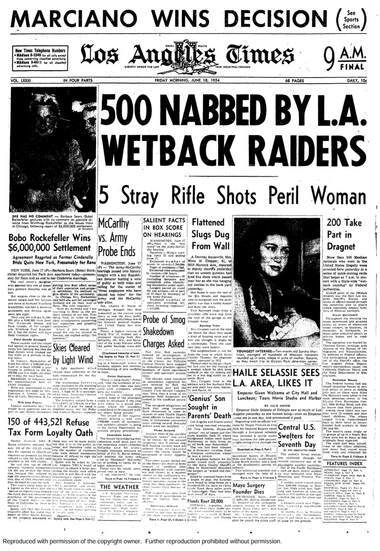Making the Bracero an "Alien"
The racialization of Bracero workers was a systemic process that began long before the implementation of the Bracero Program but intensified during its duration. From the beginning, Mexican laborers were perceived through a lens of racial and cultural inferiority. The term "bracero," meaning "manual laborer" in Spanish, became synonymous with low-status and expendable work. This racialization was evident in the treatment of Braceros by agribusinesses and the wider American public. They were often referred to as "aliens," a term that highlighted their perceived foreignness and reinforced their exclusion from American society. Transportation practices associated with the Bracero Program significantly contributed to this racialization. Braceros were frequently transported in overcrowded trucks and buses, often alongside agricultural goods, reducing them to the status of cargo rather than acknowledging their humanity. This dehumanizing treatment was not just a practical concern; it also served as a symbolic representation of the belief that Mexican workers were less worthy of dignity and respect.
The racialization of Bracero workers was significantly shaped by the cultural and political climate of the time. In the 1950s, Operation Wetback emerged, targeting undocumented Mexican workers and reinforcing negative stereotypes of Mexican laborers as illegal and undesirable. This operation, along with the public perception of Braceros as temporary and disposable, created a narrative portraying Mexican workers as a threat to social and economic stability. The imagery of Braceros being transported in unsafe conditions—often hanging from trucks or crammed into vehicles—became a powerful symbol of their marginalization. This racialization was not merely a result of individual prejudice; it was embedded within the structures of the Bracero Program itself. The absence of adequate transportation safety regulations, the exploitation of workers, and the indifference of agribusinesses to their suffering all reflected and reinforced a racial hierarchy that viewed Mexican workers as inferior. The legacy of this racialization continues to influence modern debates about immigration and labor, highlighting the long-lasting impact of the Bracero Program on the racial dynamics in the United States.

